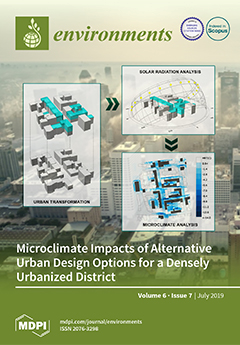Groundwater is a crucial natural resource for regular socio-economic function. Groundwater vulnerability to pollution can be assessed through Geographical Information System (GIS)-based qualitative methods. GIS-based tools, dedicated to the assessment of groundwater vulnerability, usually present several limitations, such as high cost, unavailable code,
[...] Read more.
Groundwater is a crucial natural resource for regular socio-economic function. Groundwater vulnerability to pollution can be assessed through Geographical Information System (GIS)-based qualitative methods. GIS-based tools, dedicated to the assessment of groundwater vulnerability, usually present several limitations, such as high cost, unavailable code, and a lack of functionality concerning the flexible application of vulnerability indices and vulnerability map comparison. The objective of this work was to create a new GIS-based open source application for groundwater vulnerability assessment,
GVTool, developed using QGIS software, with the capability of creating and comparing groundwater vulnerability maps considering four different methods: DRASTIC, GOD, SINTACS, and Susceptibility Index (SI). This application incorporates features from a previous tool,
DRASTIC Model, and new functionalities were included, namely three additional vulnerability assessment methods, map comparative analysis, map statistics, and index interval reclassification and symbology definition. The
GVTool functionalities and capabilities are illustrated through a groundwater vulnerability assessment in Serra da Estrela mountain (Central Portugal).
GVTool is mostly useful in integrated assessments, helping to verify if the groundwater vulnerability maps are accurate and to decide which is the most suitable method or the combination of methods to express groundwater vulnerability to pollution in a specific area.
Full article





